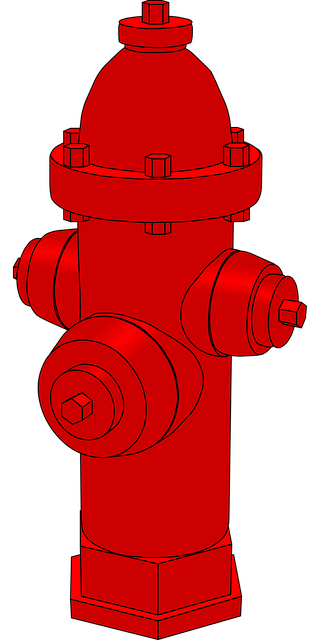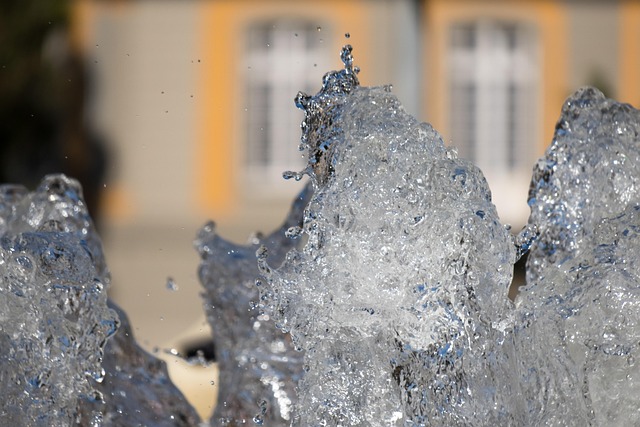Low water pressure can be caused by leaks, dirty filters, old pipes, and regulator settings. Check for leaks, clean or replace filters, upgrade pipes, adjust regulator settings, or use a Water Pressure Booster. Diagnose issues with water utility companies and home plumbing to fix low pressure and prevent future problems.
Struggling with low water pressure? This comprehensive guide offers effective solutions to get your water flow back in top form. From identifying and repairing leaks to evaluating your water supply source, these steps will help you address various causes of low water pressure. Learn about the benefits of clean filters, modern piping, adjusted regulators, and powerful boosters for a lasting fix. Implement these top strategies and bid farewell to frustrating low water pressure fixes once and for all!
- Check for Leaks and Repairs
- Inspect and Clean Water Filters
- Replace Old Pipes and Fittings
- Adjust Pressure Regulator Settings
- Consider a Water Pressure Booster
- Evaluate Your Water Supply Source
Check for Leaks and Repairs

Low water pressure can be a frustrating issue, but it’s often a fixable one. One of the first steps in addressing this problem is performing a thorough check for leaks and repairs. Leaks, even small ones, can significantly reduce water pressure throughout your home or property. Start by inspecting pipes for any visible signs of damage, corrosion, or bursting. Also, look out for drips from faucets or showerheads, as these could indicate worn-out gaskets or valves.
Repairs, such as replacing old or faulty fixtures, can significantly boost water pressure. Fixing leaks not only solves a common cause of low water pressure but also helps to conserve water and reduce utility bills. Additionally, checking the main water supply valve for proper adjustment ensures that water flow is optimized, contributing to an increase in water pressure across your plumbing system. Remember, troubleshooting low water pressure involves identifying the root causes, and repairing leaks is often a crucial step in achieving a solution, especially when considering a low water pressure fix or remedies like increasing water pressure naturally.
Inspect and Clean Water Filters

One common yet often overlooked cause of low water pressure is a dirty or clogged water filter. Over time, sediment and debris can accumulate in your filters, restricting the flow of water and resulting in reduced pressure. Regularly inspecting and cleaning your water filters is an easy and effective way to address this issue. Start by locating your main water filter, usually found near your water meter or in a utility closet. Remove the filter and rinse it under running water to dislodge any built-up gunk. Replace the filter with a clean one, ensuring it’s properly seated for optimal performance.
By keeping your filters clean, you’ll not only improve water pressure but also ensure your plumbing system operates efficiently. If you’re experiencing persistent low water pressure issues despite regular filter maintenance, consider consulting a plumber Bromsgrove for further assistance, as they can offer professional solutions tailored to your specific situation. Remember, increasing water pressure naturally starts with these simple yet crucial steps.
Replace Old Pipes and Fittings

If your home is experiencing low water pressure, one of the most effective solutions could be replacing old pipes and fittings. Over time, plumbing materials can degrade, leading to leaks and reduced water flow. Old pipes often have smaller diameters, which restrict water passage and result in poor pressure. By updating these components, you enhance the efficiency of your plumbing system, addressing a common low water pressure fix.
Not only does replacing outdated pipes improve water pressure but it also contributes to maintaining whole-house water pressure consistently. This is particularly important for homes with older plumbing systems or those experiencing sporadic pressure drops. When considering home remedies for low water pressure, investing in new pipes and fittings can be a game-changer, eliminating the need for temporary fixes and ensuring a steady flow of water throughout your space.
Adjust Pressure Regulator Settings

One effective low water pressure fix involves adjusting the settings on your pressure regulator. This device is responsible for maintaining a consistent water pressure throughout your plumbing system. By tweaking the regulator’s settings, you can often significantly increase the water pressure in your home or office. Start by locating the pressure regulator, usually found near the main water supply line. Check the manufacturer’s instructions or consult a professional if you’re unsure about its position and operation.
Once located, adjust the regulator’s settings according to your needs. Increasing the setting can boost water pressure, but be cautious not to overdo it as this could lead to water wastage or damage to your plumbing. Remember, increasing water pressure naturally through regulator adjustments is a straightforward way to address low water pressure fix issues without excessive cost or complexity, especially when compared to identifying water leak causes or other potential remedies.
Consider a Water Pressure Booster

If your home is plagued by low water pressure, a Water Pressure Booster could be the solution. This device is designed to increase the pressure in your plumbing system, ensuring that every tap and showerhead delivers a robust flow. Boosters are particularly useful for homes with older plumbing or multiple appliances that draw water simultaneously.
A high-pressure pump for home use operates by boosting the pressure at the main water line entering your house. This can be an effective low water pressure fix, providing consistent, strong water pressure throughout your property. When combined with repairing broken water pipes and other simple maintenance tasks, you can transform your once-dull shower into a refreshing experience and say goodbye to frustrating clogs or leaks.
Evaluate Your Water Supply Source

Evaluating your water supply source is a crucial step in understanding and fixing low water pressure issues. Different sources have varying capabilities to deliver the required amount of water, especially during peak usage times. If you’re experiencing low water pressure in one faucet or throughout your entire home, start by checking with your local water utility company. They can provide insights into the pressure levels they typically supply to your area and if there are any known issues or disruptions. Understanding water pressure problems from the source is essential for implementing effective low water pressure fix solutions.
Additionally, understanding the plumbing setup within your home can help pinpoint problem areas. For instance, older pipes might have corrosion or mineral buildup that restricts water flow, leading to a fix low water flow shower experience. Leaks in supply lines or faulty pressure regulator valves can also contribute to low water pressure in specific fixtures. Identifying these issues not only helps in addressing the immediate low water pressure problem but also prevents further damage and ensures a more consistent water supply for your home.
Increasing water pressure at home is achievable through several effective methods. By regularly checking for leaks, inspecting and cleaning water filters, replacing old pipes and fittings, adjusting regulator settings, considering a water pressure booster, and evaluating your water supply source, you can significantly improve low water pressure fix issues. These steps not only enhance the efficiency of your plumbing system but also ensure a steady and strong flow of water throughout your home.
